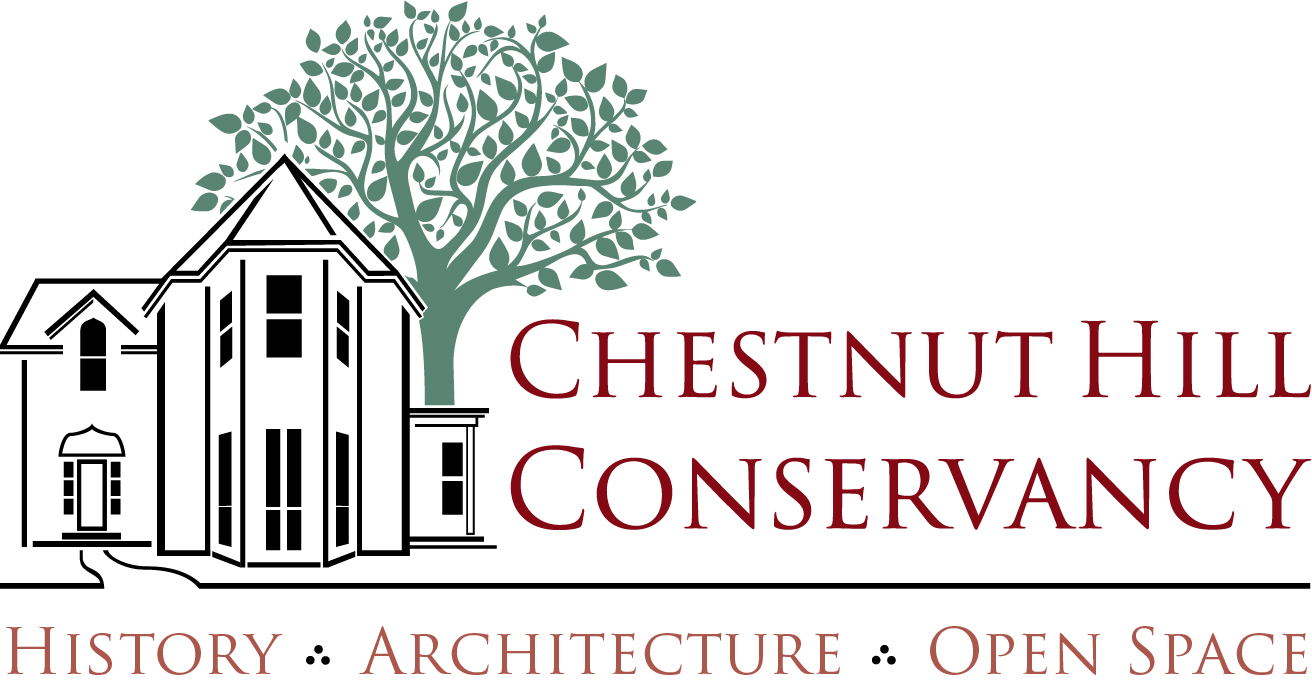Our History
Celebrate the history of the Chestnut Hill Conservancy and envision our future!1966 – Committee organizes to preserve VFW Building

1967 – Chestnut Hill Historical Society (CHHS) incorporated
1969 – “Chestnut Hill: An Architectural History” published

1970 – CHHS Completes Rehabilitation of VFW Building

1970 – CHHS programs connect community to Chestnut Hill’s past, present, and future

1970 – John McArthur Harris presents first in series of programs “Chestnut Hill: An Evening of Reminiscence”

1973 – CHHS successfully nominates 22 Houses on Summit Street to the Philadelphia Register of Historic Places

1980 to 1982 – 8860 and 8840 Norwood Avenue saved from wrecking ball

1981 – The 10-year preservation Projecty of Gravers Lane Station was completed

1984 – First annual fundraiser: Preservation Potpourri

The event would be held towards the end of each of the next 30 years, until being renamed Preservation Celebration. The event exists today as the Architectural Hall of Fame. Seen here are Grace Stewart and Richard Snowden at the second event, which was held at the Stevens House, 8860 Norwood Avenue. Image via archives: 1985.2.1.
1985 – CHHS successfully creates one of nation’s largest National Register districts, in Chestnut Hill

Listing in the National Register is first and foremost an honor and has no effect on private property owners unless they undertake a project with federal money or that requires licensing. The nomination process required an inventory of the community’s buildings, which is now a Chestnut Hill resource to encourage preservation and guide change and development. Jefferson Moak was hired by the CHHS as a consultant to complete the project, culminating in a 382-page typewritten inventory of all buildings present in Chestnut Hill at the time. Image via archives: 1996.585
1987 – CHHS campaigns to purchase 8708 Germantown Avenue for headquarters

1987 – The Harris Collection becomes the first significant donation to CHHS Archives

1990 – CHHS established easement program and acquires first land and façade easement

The board developed goals and guidelines for a land and façade easement program and accepted its first easement in 1990. The Friends of the Wissahickon now jointly sponsors this program with the Historical Society. This program currently manages more than 40 easements (valued at over $10 million), which protects more than 130 acres of open space and 13 historic facades. Pictured, 8015 Navajo Street, protected by a preservation easement in 1997. Image Via Archives: 2003.25.27
1993 – FOW donates the Wissahickon Collection to archives and partners in CHHS Easement Program

1994 – First Curator/ Archivist hired to lead Archives

1997 – The Architectural Map and Guide of Chestnut Hill published to raise appreciation
 The Map and Guide has been purchased by hundreds of visitors to the Chestnut Hill Historical Society since its release in 1997. Designed by Diane Woodward and lavishly illustrated with photographs by Jim Abbott, the map has been a success in raising the appreciation of the architectural history of Chestnut Hill for numerous newcomers to the area. Photo: CH Archit map cover
The Map and Guide has been purchased by hundreds of visitors to the Chestnut Hill Historical Society since its release in 1997. Designed by Diane Woodward and lavishly illustrated with photographs by Jim Abbott, the map has been a success in raising the appreciation of the architectural history of Chestnut Hill for numerous newcomers to the area. Photo: CH Archit map cover
2000 – CHHS goes digital and joins 21st century

Through the use of PastPerfect software, staff and volunteers have spent countless hours cataloging the collections of the Chestnut Hill Historical Archives and Library. This has helped to preserve the collections and makes them more accessible to the public. Image Via Archives: 2000.154.2
2002, 2004 – Images of America: Chestnut Hill and Chestnut Hill Revisited published

2003 – The Germantown Avenue bridge replaced over Wissahickon Creek with historically-appropriate materials and design

2004 – Chestnut Hill United Methodist Church parsonage saved from demolition.
2011 – The Easement Program became the first urban land trust accredited by the Land Trust Accreditation Commission.

2013 – 20th Century architecture tour draws hundreds from eastern US

2013 – The Archives goes “live” as more than 10,000 of its photographs are made available online

2014 – First Preservation Awards introduced

-
- Preserving / protecting historic resources (in the built or natural environment)
- Historic building restoration, rehabilitation or adaptive reuse, or
- Good stewardship of an important building.
Shown here is a 1938 view of Valley Green Inn, which won one of the first Preservation Awards. Image via archives: 2008.10.5.
2015 – Fire Station protected after 3 years of effort

2015 – Philadelphia Cricket Club property preserved

2015 – CHHS and Chestnut Hill Business Association (CHBA) mount Windows to the Past exhibit

2015 – Discovering Chestnut Hill: 300 Years of History exhibit opens at CHHS headquarters

2015 – Architectural Hall of Fame created, chosen by thousands of public votes

2016 – The Vanna Venturi House permanently protected with designation to Philadelphia Register

2017 – Chestnut Hill Historical Society becomes Chestnut Hill Conservancy

2017 – Preservation Alliance bestows Conservancy its Board of Directors Award

